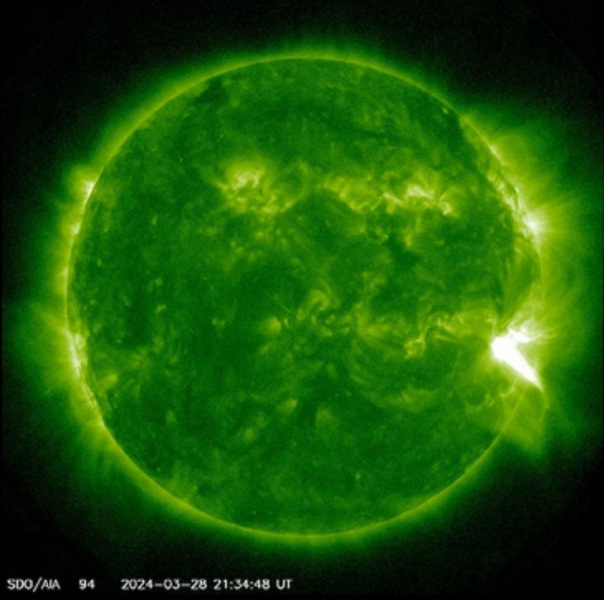New data indicates the onset of solar maximum earlier than expected
Satellites detected a massive solar flare, powerful enough to ionize part of the Earth's atmosphere. The flare, designated X1.1, was released by the National Oceanic and Atmospheric Administration's (NOAA) Space Weather Prediction Center on Thursday, March 28. X-class flares are considered the most powerful events our Sun can generate.
SpaceWeather.com reports that a solar flare caused «a shortwave communications blackout over the Pacific Ocean», as it ionized the upper layers of the Earth's atmosphere.
In addition, this flare was accompanied by a significant ejection of plasma called a coronal mass ejection (CME). NOAA scientists were concerned about the prospect of a CME impacting Earth, which could lead to a geomagnetic storm and affect satellites, radio communications and other infrastructure. However, NOAA announced Friday that the flare will likely not reach Earth.
This event occurred immediately after the «double» an X-class flare on Monday, March 25, which caused the strongest geomagnetic storm on our planet in the last six years. This phenomenon is called a sympathetic solar flare and consists of two simultaneous explosions.
The succession of such powerful events has led scientists to speculate that the Sun may have entered an era of peak activity known as solar maximum, starting a year earlier than previous forecasts predicted. However, to give a full assessment of this phenomenon, you will have to wait until the sun «calms down».
X-class flares occur most often during solar maximum, which is part of the 11-year solar cycle. To date, seven such powerful X-class flares have already been detected in 2024, while twice as many were detected in the entire year of 2023.

